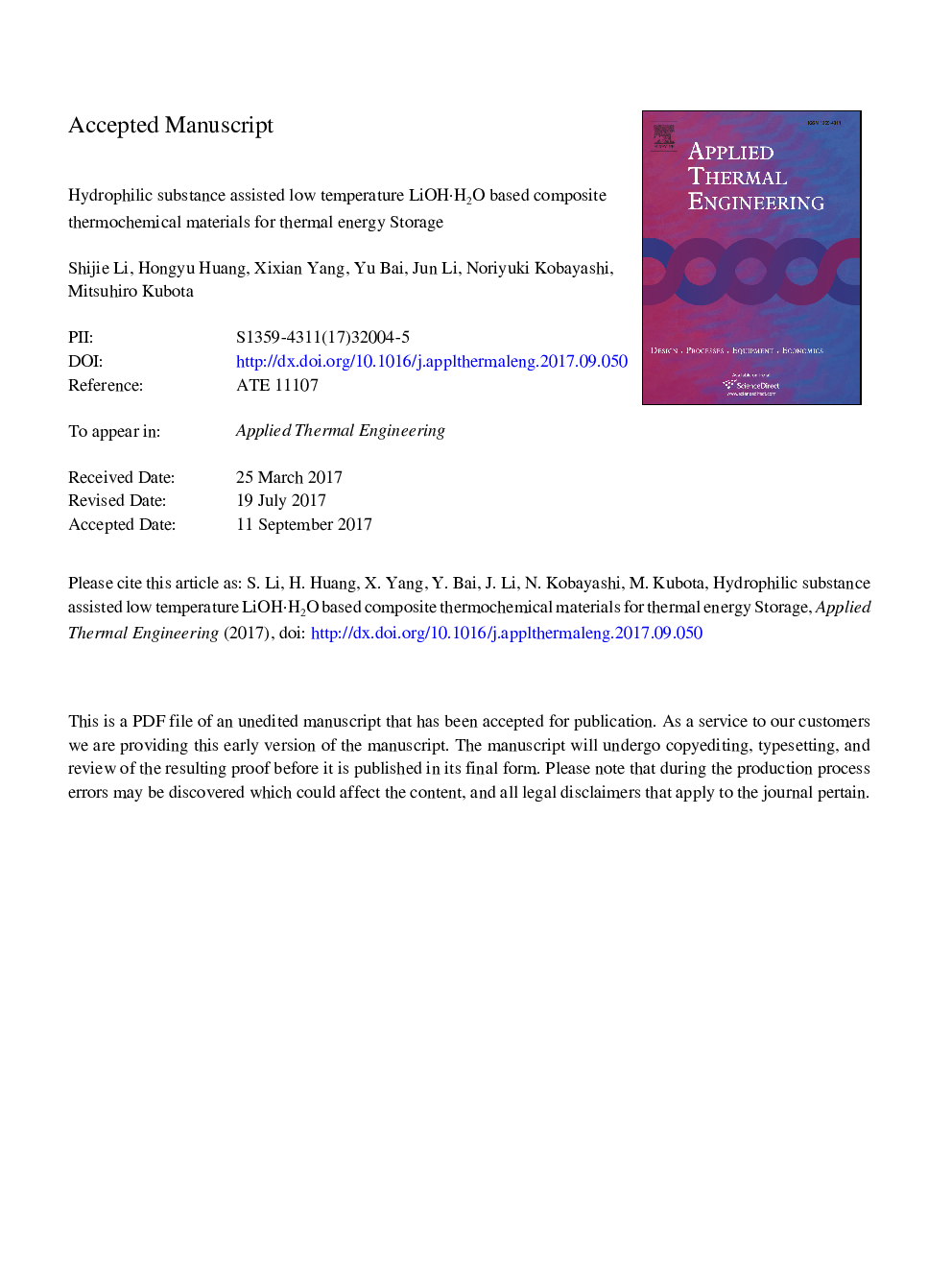| Article ID | Journal | Published Year | Pages | File Type |
|---|---|---|---|---|
| 7046631 | Applied Thermal Engineering | 2018 | 15 Pages |
Abstract
Lithium hydroxide monohydrate was modified by impregnation method with hygroscopic materials, such as polyethylene glycol (PEG), lithium chloride (LiCl), 13X-zeolite and NaY-zeolite. The lithium hydroxide monohydrate particles were well dispersed into nanoscale as composed with 13X-zeolite and NaY-zeolite. These composite materials exhibited obviously improved heat storage capacity and higher hydration rate than pure lithium hydroxide monohydrate, and the introduction of hygroscopic materials leads to greatly decreasing of apparent activation energy for the thermochemical reaction process. It is probably due to that hydrophilic materials provide efficient hygroscopic reaction interface and also show catalytic effect to the hydration reaction. Among these thermochemical materials, LiOH·H2O/13X-zeolite showed the lowest apparent activation energy (21.5 kJ/mol) and the highest heat storage density (1949 kJ/kg), which is 2.9 times higher than the pure lithium hydroxide after the same hydration time.
Related Topics
Physical Sciences and Engineering
Chemical Engineering
Fluid Flow and Transfer Processes
Authors
Shijie Li, Hongyu Huang, Xixian Yang, Yu Bai, Jun Li, Noriyuki Kobayashi, Mitsuhiro Kubota,
